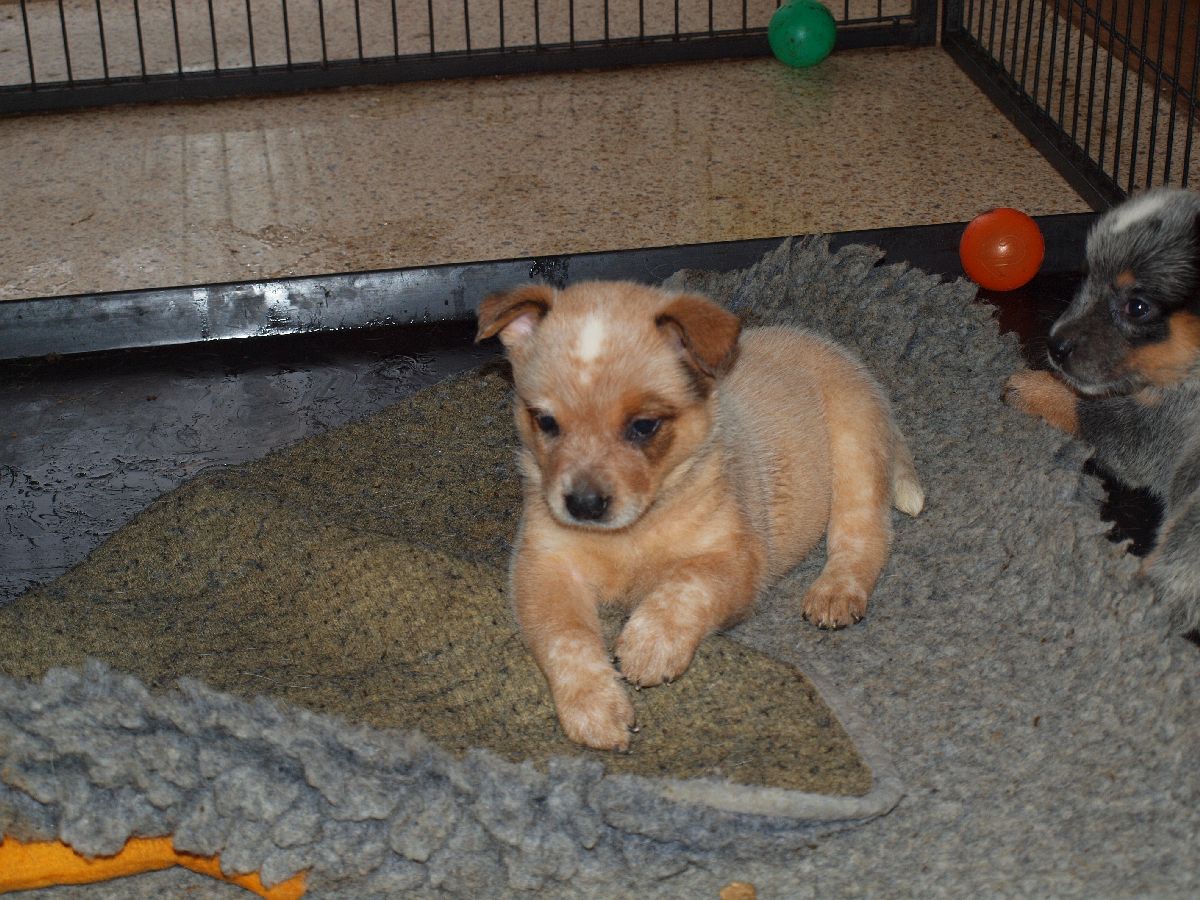PRA at the Australian Cattle Dog
PRA at the Australian Cattle dog until the introduction of the gene test was the Optigen company, a major problem in the breed ACD, as to the Symptom onset of the breeding animals that have stood at stud, and so the disease was inherited.
On the distribution of PRA are likely to have some above average often used stud dog in the home country of Australia.
In progressive retinal atrophy (PRA) is a slowly progressive death of the retina of dogs. It is a hereditary, progressive (gradually progressive) and ultimately leading to blindness in both eyes disease, and begin the degenerative processes in the photoreceptors and in the course of the disease involve the entire retina. Despite similar clinical features, the symptoms are a variety of underlying causes.
The cause in most cases in an autosomal recessive gene defect.
To date there are no medicines or surgical measures to heal the PRA. Dogs that suffer from PRA blindness, almost always.
The person responsible for the prcd-PRA mutation was identified in 2006 by the group of Gustave D. Aguirre (University of Pennsylvania, USA).
The prcd-PRA is inherited as an autosomal recessive trait. This means that a dog is just sick, if he has ever received an affected gene from both parents. It must, therefore, both father and mother who have mutated prcd gene.
Carrier, i.e. Animals with only one affected gene can, though not ill themselves, they nevertheless thought that the genes with a probability of 50% on to their offspring. In the mating of two carriers is a risk that the offspring are affected by the disease. Therefore, a carrier should never be mated with another carrier.
The prcd-PRA as an autosomal recessive trait.
There are three genotypes:
1. Genotype N / N (homozygous normal): This dog carries the mutation and not to suffer an extremely low risk of prcd-PRA. He can not pass the mutation to his offspring.
2.
Genotype N / PRA (heterozygous carrier): This dog is wearing a copy of the mutated prcd-PRA gene. He has an extremely low risk of suffering from prcd-PRA can pass the mutation with a probability of 50% of its offspring. Such a dog should be bred only with a prcd-PRA mutation-free dog.
3. PRA genotype / PRA (homozygous affected): This dog carries two copies of the mutated prcd gene and has an extremely high risk of suffering from prcd-PRA. He is the mutation to 100%
PRA at the Australian Cattle dog until the introduction of the gene test was the Optigen company, a major problem in the breed ACD, as to the Symptom onset of the breeding animals that have stood at stud, and so the disease was inherited.
On the distribution of PRA are likely to have some above average often used stud dog in the home country of Australia.
In progressive retinal atrophy (PRA) is a slowly progressive death of the retina of dogs. It is a hereditary, progressive (gradually progressive) and ultimately leading to blindness in both eyes disease, and begin the degenerative processes in the photoreceptors and in the course of the disease involve the entire retina. Despite similar clinical features, the symptoms are a variety of underlying causes.
The cause in most cases in an autosomal recessive gene defect.
To date there are no medicines or surgical measures to heal the PRA. Dogs that suffer from PRA blindness, almost always.
The person responsible for the prcd-PRA mutation was identified in 2006 by the group of Gustave D. Aguirre (University of Pennsylvania, USA).
The prcd-PRA is inherited as an autosomal recessive trait. This means that a dog is just sick, if he has ever received an affected gene from both parents. It must, therefore, both father and mother who have mutated prcd gene.
Carrier, i.e. Animals with only one affected gene can, though not ill themselves, they nevertheless thought that the genes with a probability of 50% on to their offspring. In the mating of two carriers is a risk that the offspring are affected by the disease. Therefore, a carrier should never be mated with another carrier.
The prcd-PRA as an autosomal recessive trait.
There are three genotypes:
1. Genotype N / N (homozygous normal): This dog carries the mutation and not to suffer an extremely low risk of prcd-PRA. He can not pass the mutation to his offspring.
2.
Genotype N / PRA (heterozygous carrier): This dog is wearing a copy of the mutated prcd-PRA gene. He has an extremely low risk of suffering from prcd-PRA can pass the mutation with a probability of 50% of its offspring. Such a dog should be bred only with a prcd-PRA mutation-free dog.
3. PRA genotype / PRA (homozygous affected): This dog carries two copies of the mutated prcd gene and has an extremely high risk of suffering from prcd-PRA. He is the mutation to 100%


